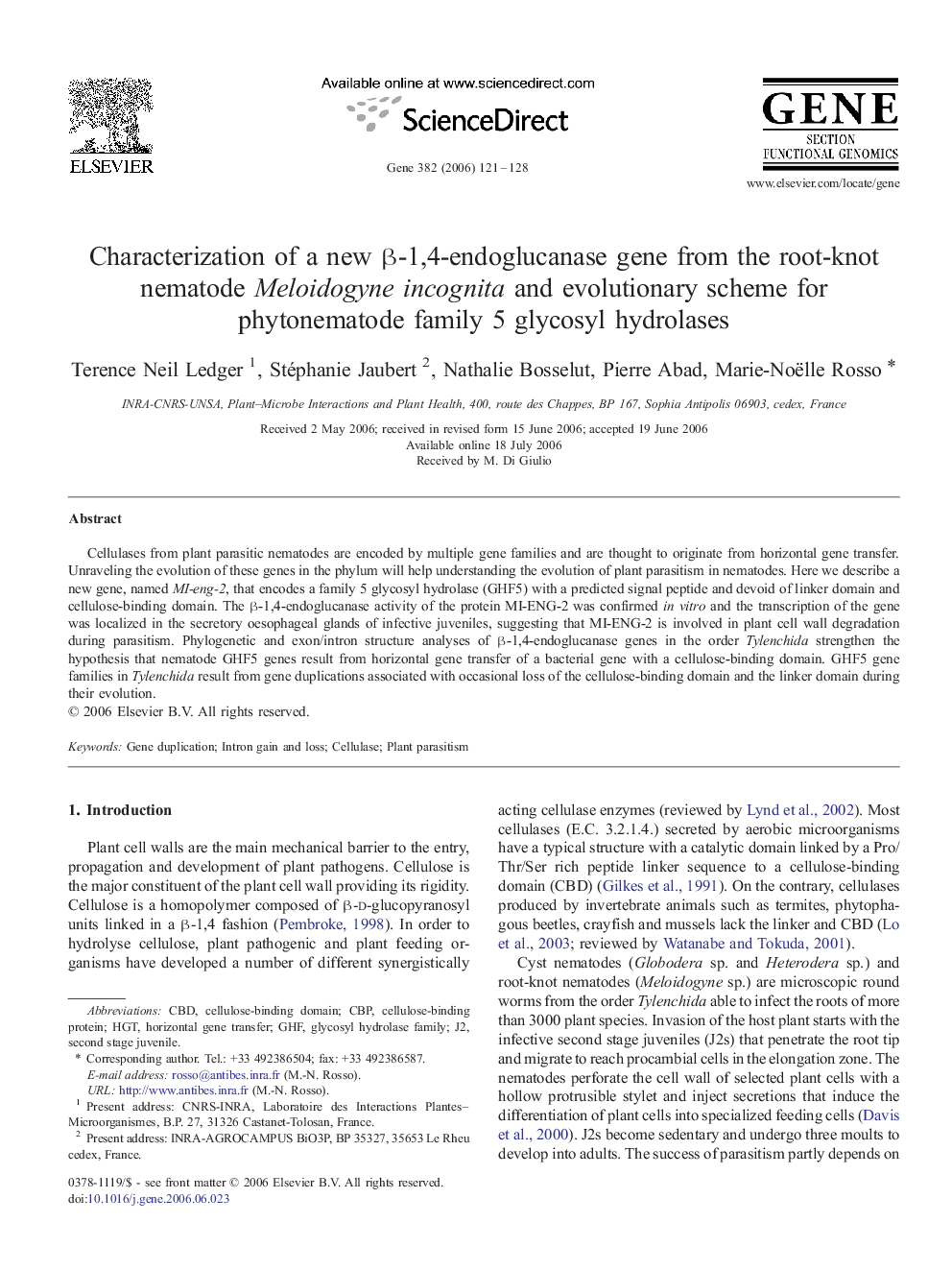| کد مقاله | کد نشریه | سال انتشار | مقاله انگلیسی | نسخه تمام متن |
|---|---|---|---|---|
| 2820045 | 1569945 | 2006 | 8 صفحه PDF | دانلود رایگان |

Cellulases from plant parasitic nematodes are encoded by multiple gene families and are thought to originate from horizontal gene transfer. Unraveling the evolution of these genes in the phylum will help understanding the evolution of plant parasitism in nematodes. Here we describe a new gene, named MI-eng-2, that encodes a family 5 glycosyl hydrolase (GHF5) with a predicted signal peptide and devoid of linker domain and cellulose-binding domain. The β-1,4-endoglucanase activity of the protein MI-ENG-2 was confirmed in vitro and the transcription of the gene was localized in the secretory oesophageal glands of infective juveniles, suggesting that MI-ENG-2 is involved in plant cell wall degradation during parasitism. Phylogenetic and exon/intron structure analyses of β-1,4-endoglucanase genes in the order Tylenchida strengthen the hypothesis that nematode GHF5 genes result from horizontal gene transfer of a bacterial gene with a cellulose-binding domain. GHF5 gene families in Tylenchida result from gene duplications associated with occasional loss of the cellulose-binding domain and the linker domain during their evolution.
Journal: Gene - Volume 382, 1 November 2006, Pages 121–128